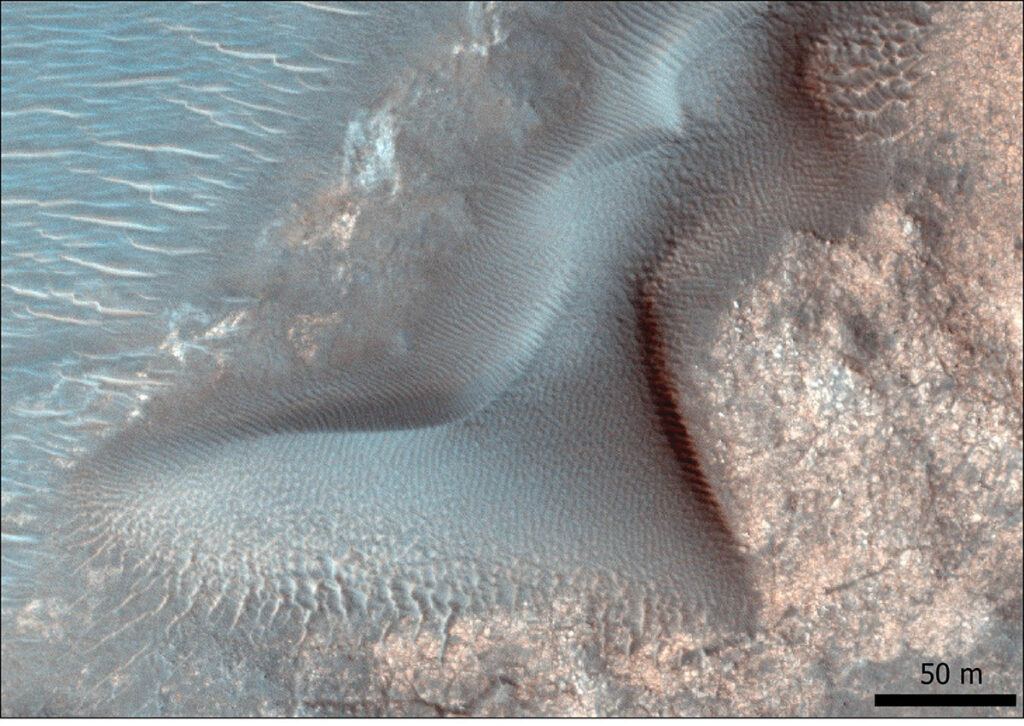For the first time, an international team of planetary scientists, including David Vaz, from the Center for Research on Earth and Space at the University of Coimbra, observed the movement of giant sand waves, designated megaripples (“mega ripples”), on the planet Mars.
This discovery, the result of about a decade of observations (between 2007 and 2016), is of particular relevance, since, until now, it was thought that these structures – as they are made up of coarser sand particles – would not be active (the wind currently would not be able to move these particles).
«Since there was no evidence that they were moving, it was believed that they were “relics” of the activity of stronger winds that would have existed in the past on Mars. However, our observations are quite conclusive and contradict this view, that is, the megaripples on Mars they are definitely active,” explains David Vaz.
To reach this conclusion, that after all the “mega ripples” move across the red planet, albeit slowly (about 10 centimeters per year), the team led by Simone Silvestro, from INAF-Capodimonte Astronomical Osservatory (Italy), analyzed more than a thousand of these sedimentary structures, using high-resolution images acquired by the probe Mars Reconnaissance Orbiter, from NASA, in two regions of Mars: crater McLaughline Nili Fossae.
The participation of the CITEUC researcher in this discovery was centered on the «processing of the surface images obtained by the probe and on the application of several techniques, previously developed, which allow the measurement of sediment fluxes with great precision (transport speed and quantity of transported sediments). by the action of the wind) on the surface of Mars».
“In this study it was particularly important to measure the speed and the way in which megaripples, a specific type of undulation that is formed by the transport of sediments due to the action of the wind, moved during a period of time of almost 10 terrestrial years», he stresses.
David Vaz also contributed with a set of measurements of migration velocity and sedimentary fluxes to dunes in other regions of Mars, «which served to frame and explain the observations made in the two areas in which the study focuses», having also participated in the work courses that took place in the Moroccan desert in 2017 and 2019, where they studied megaripples terrestrial.
This work, in the end, served as preparation and inspiration for the discoveries we made later on Mars». This is because the phenomenon observed on Mars is also registered on Earth, although at very different scales and speeds.
Also according to David Vaz, PhD in Geology from the Faculty of Science and Technology of the University of Coimbra (FCTUC), this study «is important because it demonstrates, for the first time, that these sedimentary structures (megaripples) are active, and that the wind on the Martian surface will be strong enough to move larger particles. Earth, geological processes continue to shape the surface of the planet».
The team, which also includes scientists from the Università degli Studi “Gabriele d'Annunzio" (Italy), Lunar and Planetary Laboratory, University of Arizona (USA), Planetary Science Institute (USA) e Ben-Gurion University of the Negev (Israel), now intends to extend the investigation of megaripples to the entire planet Mars.
The study, recently published in Journal of Geophysical Research: Planets, was highlighted and commented on in the Science last week.
See the video with examples of the movement of the dunes and megaripples:
Click here to access the scientific article.



















Comments